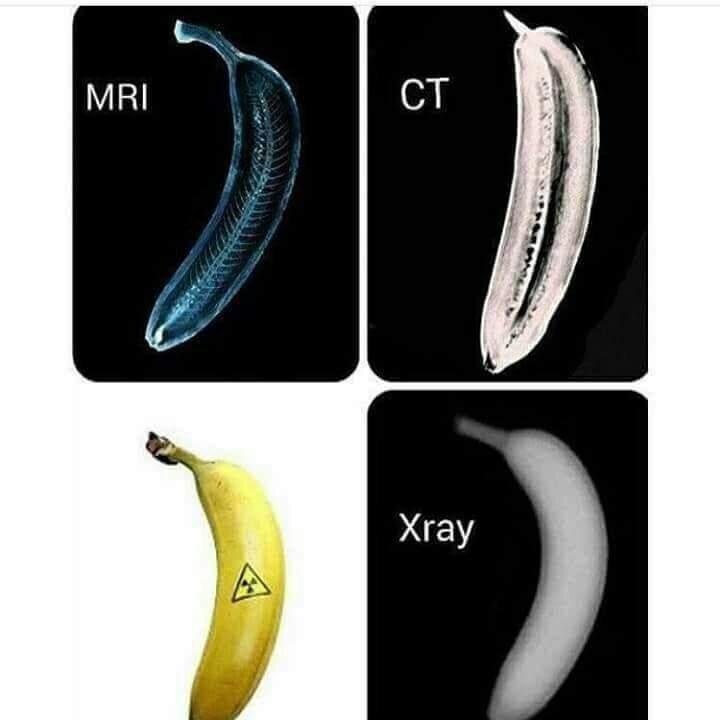comparison of features, advantages, and limitations of MRI, X-ray, and CT scans
MRI, X-ray, and CT scan are all medical imaging methods that use techniques to produce images. MRI uses a strong magnetic field and radio waves to produce images of the soft tissues of the brain, spinal cord, lungs, and joints without harmful radiation. Because of its longer imaging time and higher cost, it is best suited for finer details and cases that require soft tissue detection.
In contrast, X-rays use ionizing radiation to create two-dimensional images that are useful for imaging bones and diagnosing fractures, injuries, and dental problems. It is fast, inexpensive, and widely available, but it does produce some soft tissue damage, and its ionizing radiation can be harmful with repeated use.
CT scans, which use ionizing radiation to produce cross-sectional and three-dimensional images, can provide detailed images of both hard and soft tissues and are very useful for diagnosing internal injuries, tumors, and emergency evaluations. However, their higher radiation dose and higher cost than X-rays require greater care in use. Each of these methods is selected based on the specific diagnostic needs and patient conditions.
Table of Contents
short comparison
Here's an in-depth comparison to help you understand the distinct features, advantages, and limitations of MRI, X-ray, and CT scans:
| Feature | MRI (Magnetic Resonance Imaging) | X-ray (Radiography) | CT Scan (Computed Tomography) |
|---|---|---|---|
| Imaging Technique | Uses strong magnetic fields and radio waves to generate detailed images of soft tissues. | Uses ionizing radiation to capture images, mainly used for bones. | Utilizes ionizing radiation to create detailed cross-sectional images of the body. |
| Best For | Soft tissues: brain, spinal cord, joints, muscles, heart. | Bones, detecting fractures, infections, and dental issues. | Detailed images of both bone and soft tissues, internal injuries, tumors. |
| Resolution and Detail | High resolution, excellent for soft tissues, can differentiate between different tissue types. | Limited to bones and dense structures, less detailed for soft tissues. | High resolution, detailed cross-sectional images, good for visualizing complex structures. |
| Duration | Longer, typically 30-60 minutes. | Very short, a few seconds to minutes. | Quick, often a few minutes. |
| Radiation Exposure | None, uses magnetic fields. | Yes, exposes to ionizing radiation. | Yes, higher dose of ionizing radiation than X-ray. |
| Patient Comfort | Noisy, often requires ear protection, enclosed space can be claustrophobic. | Quiet, quick procedure. | Quiet, relatively quick. |
| Use of Contrast Agents | Often uses gadolinium-based contrast agents for better tissue differentiation. | Sometimes used but less common. | Frequently uses iodine-based contrast agents to enhance image detail. |
| Contraindications | Not suitable for patients with metal implants, pacemakers, or certain medical devices. | Generally safe for most patients, caution during pregnancy. | Safe for most, higher radiation dose should be considered, caution with contrast allergies. |
| Cost | Higher due to advanced technology and longer scan times. | Lower cost, widely available. | Moderate to high, depending on complexity. |
| Applications in Medicine | Neurological disorders, musculoskeletal issues, cardiovascular and soft tissue abnormalities. | Bone fractures, dental issues, chest infections, arthritis. | Emergency diagnostics, complex bone fractures, organ imaging, tumor detection. |
| Typical Scenarios | Detailed brain scans, spinal injuries, joint disorders, heart and blood vessel examination. | Assessing fractures, dental exams, chest X-rays for pneumonia. | Evaluating internal bleeding, detailed tumor imaging, complex fracture assessment. |
| Availability | Available in specialized medical centers, requires advanced equipment. | Widely available in hospitals and clinics. | Available in most hospitals, often used in emergency departments. |
Detailed Explanations
MRI (Magnetic Resonance Imaging)
-
Mechanism: Uses powerful magnets and radio waves to produce detailed images of the body’s internal structures. It does not involve ionizing radiation.
-
Applications: Ideal for imaging soft tissues such as the brain, spinal cord, muscles, and joints. It is also used for cardiac imaging and detecting tumors.
-
Limitations: Longer scan times, higher costs, and not suitable for patients with metallic implants. The enclosed nature of MRI machines can cause discomfort for claustrophobic patients.
X-ray (Radiography)
-
Mechanism: Uses ionizing radiation to capture images of the body's internal structures, particularly bones.
-
Applications: Commonly used for detecting fractures, dental issues, chest infections, and arthritis. It provides quick and effective imaging of dense structures like bones.
-
Limitations: Limited detail for soft tissues, exposure to ionizing radiation, though usually at low doses. It is generally quick and widely available.
CT Scan (Computed Tomography)
-
Mechanism: Uses ionizing radiation to create detailed cross-sectional images (slices) of the body. The images can be combined to create 3D representations.
-
Applications: Widely used for diagnosing a range of conditions, including internal injuries, cancers, and detailed bone imaging. It is especially valuable in emergency settings for its speed and comprehensive imaging capabilities.
-
Limitations: Higher doses of radiation compared to standard X-rays, higher cost, and potential allergic reactions to contrast agents used in some scans.
Conclusion
Each imaging modality has its strengths and weaknesses, and the choice of which to use depends on the specific medical situation. MRI is preferred for detailed soft tissue imaging without radiation exposure. X-rays are quick and cost-effective for bone imaging and initial assessments. CT scans offer comprehensive, detailed images of both bones and soft tissues, making them invaluable in complex and emergency cases.





